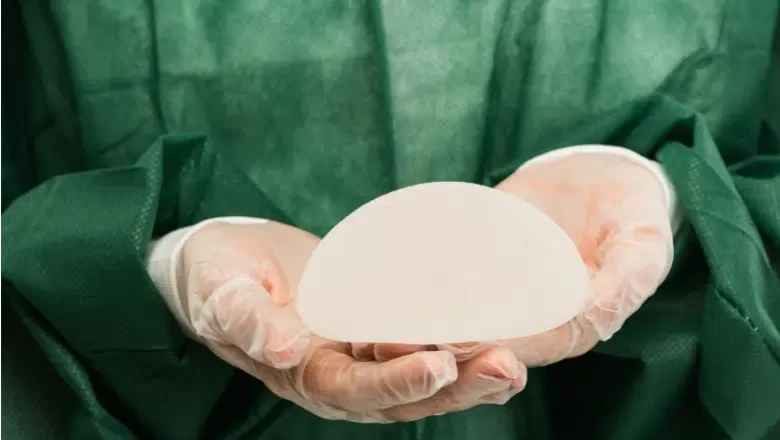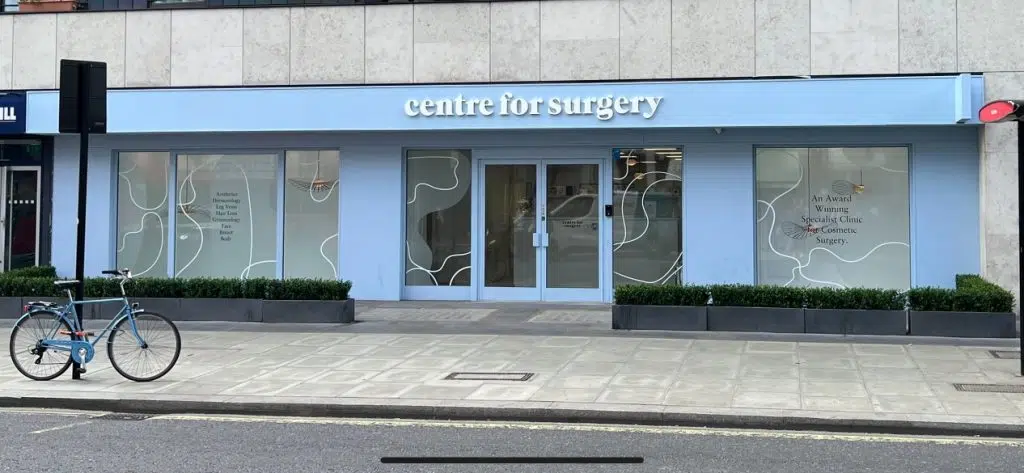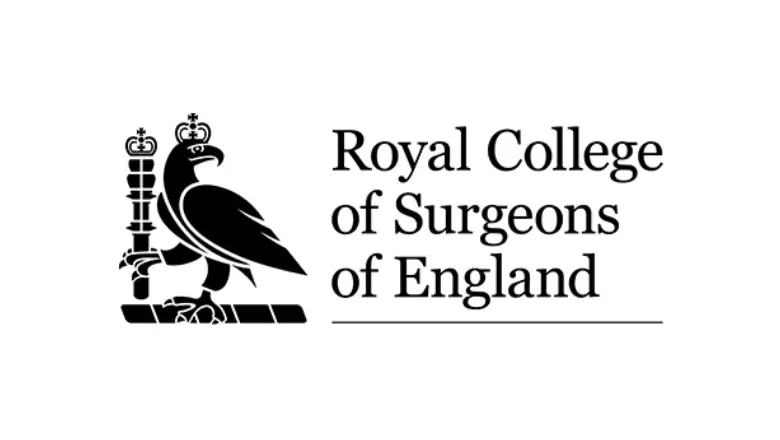Pros & Cons of En Bloc Capsulectomy
If you are considering breast implant removal surgery and wondering about the right surgical technique, such as whether an en bloc capsulectomy is necessary, we can provide some information to guide your decision-making process.
RELATED: Breast Implant Removal FAQs – Q&A about Explant Surgery
Breast implant surgery, like any surgical procedure, carries a risk of complications, although the rate of complications is generally low, especially when performed by a skilled plastic surgeon. However, complications can occur, such as implant rupture, breast pain, swelling, seroma, inflammation, or associations with conditions like Breast Implant Illness (BII) or Breast Implant-Associated Anaplastic Large Cell Lymphoma (BIA-ALCL). In some cases, you may require breast implant revision surgery, and the decision to remove or replace your implants is entirely up to you.
In this article, we will explore the most commonly used breast implant removal techniques. The two main techniques are the En Bloc procedure and other types of capsulectomy. Both procedures share the goal of removing the implants, the surrounding capsule, and any scar tissue that may have formed around them.
The purpose of these procedures is typically to improve overall health, enhance physical comfort, and alleviate difficulties associated with the implants.
Many patients who experience symptoms related to breast implants or Breast Implant Illness (BII) may specifically request En Bloc Removal.
Centre for Surgery, located in London, is a highly regarded specialist plastic surgery clinic. Our skilled surgeons are dedicated to providing optimal results for patients seeking en bloc capsulectomy and other breast implant removal procedures.
If you are considering breast implant removal, we recommend scheduling a consultation with one of our experienced plastic surgeons at Centre for Surgery. They will evaluate your individual case, discuss your concerns, explain the available options, and help determine the most suitable surgical technique for your specific needs and goals.
RELATED: En Bloc Technique For Breast Implant Removal
What Is an En Bloc Capsulectomy?
An en bloc capsulectomy is a surgical technique used for the complete removal of breast implants along with the scar tissue capsule surrounding them. The procedure involves removing both the implant and the capsule as a whole without opening the capsule.
Performing an en bloc capsulectomy presents certain challenges. It is a more complex and demanding procedure for both the surgeon and the patient. The surgeon must exercise caution and precision to avoid tearing the thin capsule, which is typically less than 1 millimetre thick. Removing the implant and capsule requires a larger incision than a standard implant or insertion incision.
Patients may experience increased discomfort, pain, and soreness following the procedure. In some cases, there may be post-operative bleeding.
To prevent swelling and fluid accumulation, surgeons often place drains at the breast level during the surgery. It’s important to note that the presence of scar tissue from the capsule can affect the placement of a new implant if one is being inserted during the same procedure.
The decision to pursue an en-bloc capsulectomy depends on various factors, including the specific circumstances of the patient, their concerns, and the surgeon’s expertise. Consulting with a qualified plastic surgeon at Centre for Surgery is crucial to determine the most appropriate approach for implant removal and to discuss potential risks and benefits.
Am I a Suitable Candidate for En Bloc Capsulectomy?
It is essential to understand that not every patient seeking implant removal or replacement is a suitable candidate for En Bloc capsulectomy. There are certain factors to consider before opting for this technique. Removing the capsule intact may prove challenging in cases where it has become extremely fragile. Additionally, it is not advisable to perform deep incisions in areas where the capsular tissue is in close proximity to the rib cage. Such incisions can potentially puncture the lung cavity, resulting in increased post-surgical pain. Due to these factors, surgeons rarely guarantee en bloc capsulectomy. If you still decide to pursue this technique, it is crucial to ensure that your surgeon takes all necessary precautions to prevent any additional injuries.
Important Warning – The implant capsule may be located near the ribs or lung, and during the dissection of the capsule, there is a risk of puncturing the lung, leading to pneumothorax. Therefore, it is imperative to choose a highly experienced plastic surgeon who is skilled in performing en bloc capsulectomy.
How will I look after implant removal surgery using the en bloc capsulectomy technique?
Many women have concerns about the cosmetic outcome of En Bloc Capsulectomy surgery. It is a common question we receive at Centre for Surgery: How will I look after undergoing en bloc capsulectomy? Unfortunately, there is no definitive answer, as the final appearance of your breasts post-surgery depends on various factors.
The size of the implant, the extent of breast tissue displacement, skin elasticity, and whether you choose to have the implant replaced or removed altogether all play a role in determining the aesthetic outcome.
Choosing an experienced plastic surgeon is vital in achieving natural-looking results. While there will be new scars resulting from the surgery, these carry inherent surgical risks. It is essential to conduct thorough research and engage in detailed discussions with your surgeon before making a decision. Managing your expectations is crucial prior to undergoing the procedure.
During your consultation at our Baker Street clinic, we can provide you with a range of before and after photographs of different patients who have undergone en bloc capsulectomy with and without implant replacement or breast lifts. Reviewing these images will give you a realistic understanding of what your potential results may look like.
Remember, each individual’s anatomy and healing process are unique, so it is important to have open and honest discussions with your surgeon about your desired outcomes and any concerns you may have. By working closely with your surgeon and having realistic expectations, you can strive for the best possible outcome for your en bloc capsulectomy surgery.
What does capsulectomy surgery involve?
Capsulectomy refers to the surgical removal of the capsule that forms around a breast implant. There are two main types of capsulectomy: partial capsulectomy and total capsulectomy. Let’s explore each of them in more detail:
- Partial Capsulectomy: Partial capsulectomy, also known as capsulotomy, is a surgical procedure aimed at loosening the scar tissue that forms around the breast implant. This procedure is commonly performed when patients experience increased discomfort or capsular contracture, which can affect the appearance of the breasts. During the surgery, the surgeon removes the affected portion of the capsule tissue. By eliminating the scar tissue, the implant can become softer, the tension around the implant is released, and the overall aesthetic of the breasts can improve. In some cases, patients may opt for an implant replacement, but it is not always necessary as part of the surgery.
- Total Capsulectomy: Total capsulectomy involves completely removing the entire capsule tissue, typically done in pieces or sections. If a patient desires a breast implant replacement, the surgeon may recommend a different type of implant and adjust its placement. These steps are taken to minimize the risk of future complications, such as capsular contracture. Total capsulectomy ensures the thorough removal of the capsule tissue, providing a clean and fresh environment for the new implant.
RELATED: En Bloc vs Partial Capsulectomy for Breast Implant Removal
Capsulectomy for Capsular Contracture: Restoring Breast Health
Capsular contracture, a common complication associated with breast implants, can be effectively addressed through a capsulectomy procedure. Capsular contracture occurs when your body’s response to a foreign object, such as an implant, leads to the formation of excessive collagen. This collagen causes the surrounding tissues to become fibrous, resulting in firmness and discomfort. While capsular contracture can develop shortly after surgery or even years later, taking precautionary measures can greatly minimize the risk of these complications.
Understanding the Grades of Capsular Contracture
Capsular contracture is classified into four grades, each indicating the severity of the condition:
- Grade 1: The breast appears natural and feels soft to the touch.
- Grade 2: The breast maintains a natural appearance but has a slightly firmer texture.
- Grade 3: The breast becomes visibly distorted, feels firm, and is hard to the touch.
- Grade 4: The breast appears highly distorted, feels hard, and is accompanied by significant pain.
Addressing Capsular Contracture through Capsulectomy
To correct capsular contracture, a partial or complete capsulectomy is performed. During this procedure, the surgeon removes the affected capsule tissue. Following the capsulectomy, if desired, the implant can be replaced. Capsulectomy is not solely performed to address contractures; it can also be done for other reasons, such as implant removal or replacement due to patient preference or implant-related concerns.
By undergoing a capsulectomy, patients can regain optimal breast health and alleviate the discomfort associated with capsular contracture. However, it is essential to consult with a skilled plastic surgeon to determine the most suitable course of action based on individual circumstances.
At Centre for Surgery, our experienced surgeons specialise in capsulectomy procedures and are dedicated to delivering exceptional results. During your consultation, we will thoroughly evaluate your condition, discuss available options, and develop a personalised treatment plan tailored to your specific needs and goals.
Rest assured that with proper care and attention, capsular contracture can be effectively addressed, allowing you to enjoy the natural look and feel of your breasts.
Other reasons to get breast implant removal
In addition to the reasons mentioned, several other factors may lead individuals to choose breast implant removal surgery. These reasons include, but are not limited to:
- Breast Implant Illness (BII): BII is a condition characterized by a wide range of symptoms that some individuals attribute to their breast implants. These symptoms can include fatigue, joint pain, cognitive difficulties, and autoimmune-like symptoms. While the cause of BII is not yet well understood, some individuals may opt for implant removal to alleviate their symptoms.
- Rupture in Silicone Gel Implants: Over time, the outer shell of silicone gel implants may develop tears or ruptures, resulting in the leakage of the gel filling. This can be detected through imaging or if there are noticeable changes in breast shape or size. Removing the implants may be chosen for those concerned about implant integrity.
- Infection in the Capsule: Although rare, infections can occur in the area surrounding the capsule that forms around the implant. In some cases, persistent or recurrent infections may prompt individuals to undergo implant removal surgery to address the infection and prevent further complications.
- Implant Extrusion: In rare instances, implants may extrude through the skin, meaning that they protrude or become visible on the surface. This can occur due to issues with tissue healing or implant positioning. To address this complication, the implant is typically removed.
- Breast Implant-Associated Anaplastic Large Cell Lymphoma (BIA-ALCL): BIA-ALCL is an extremely rare form of cancer that can develop in the scar capsule surrounding breast implants. Although the incidence is very low, individuals diagnosed with BIA-ALCL will require surgical intervention, including implant removal, to treat the condition.
How Does Capsulectomy Differ From an En Bloc Capsulectomy?
Capsulectomy and en bloc capsulectomy are two different surgical techniques used for the removal of breast implants and their surrounding capsules. Let’s explore the differences between these procedures:
Capsulectomy: Capsulectomy is a general term for removing a breast implant along with the capsule. It can be performed as a partial or complete capsulectomy. During a partial capsulectomy, the surgeon removes a portion of the capsule tissue, while the entire capsule is removed in a complete capsulectomy. This technique involves dissecting the capsule and removing it in pieces.
En Bloc Capsulectomy: Enbloc capsulectomy, on the other hand, involves the removal of the implant and the surrounding capsule as one intact unit. Unlike capsulectomy, en bloc capsulectomy aims to remove the implant and capsule without cutting into the capsule itself. This technique is typically considered more invasive and is often performed in specific cases where there is a rupture of the implant or a concern for breast implant-associated anaplastic large cell lymphoma (BIA-ALCL).
It’s important to note that en bloc capsulectomy has gained attention and popularity in online discussions in the UK, with some patients specifically requesting this technique by name. However, the choice of technique should be determined by an experienced plastic surgeon based on the individual patient’s condition and needs. In many cases, a partial capsulectomy is preferred as it is less invasive and still effectively addresses the desired outcome.
The decision between capsulectomy and en bloc capsulectomy depends on various factors, including the specific circumstances of the patient, implant-related concerns, and the surgeon’s professional judgment. The aim is to minimise risks and achieve the best possible outcome for the patient’s comfort and well-being.
If you are considering breast implant removal, it is crucial to consult with a qualified plastic surgeon who can thoroughly assess your situation, discuss the available options, and guide you towards the most suitable surgical technique based on your individual needs and goals.
En Bloc Capsulectomy London – Why Choose Centre for Surgery?
When it comes to en bloc capsulectomy in London, Centre for Surgery is a leading choice for patients seeking expert care and optimal results. Here’s why you should consider choosing Centre for Surgery:
- Specialist Plastic Surgeons: Centre for Surgery boasts a team of highly skilled and experienced plastic surgeons who specialise in breast surgery, including en bloc capsulectomy. Our surgeons have extensive knowledge and expertise in performing complex procedures, ensuring you receive the highest standard of care.
- Patient-Centred Approach: At Centre for Surgery, we prioritise the well-being and satisfaction of our patients. We take the time to listen to your concerns, understand your goals, and tailor our treatment plans accordingly. Your comfort and safety are of utmost importance to us, and we strive to provide a supportive and compassionate environment throughout your surgical journey.
- State-of-the-Art Facilities: Our clinic in London is equipped with advanced surgical facilities and cutting-edge technology, enabling us to deliver exceptional outcomes. We maintain high cleanliness, safety, and infection control standards to ensure the best surgical experience for our patients.
- Comprehensive Consultations: We believe in the power of informed decision-making. During your consultation at Centre for Surgery, our surgeons will thoroughly assess your condition, explain the en bloc capsulectomy procedure, discuss potential risks and benefits, and answer all your questions. We aim to provide you with all the information you need to make confident choices about your treatment.
- Excellent Patient Reviews: Centre for Surgery has a strong track record of patient satisfaction. Our positive reviews and testimonials from previous patients speak to the quality of care we provide and the exceptional results we achieve. We are committed to maintaining our reputation as a trusted and reputable plastic surgery clinic in London.












